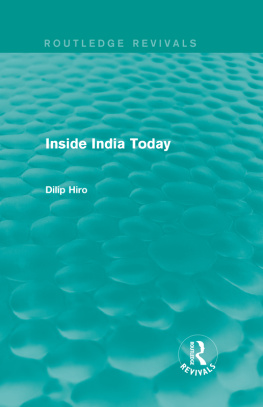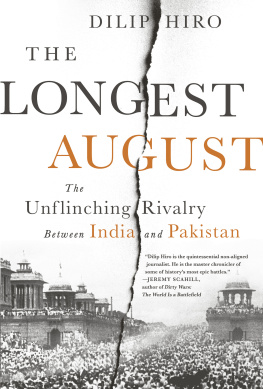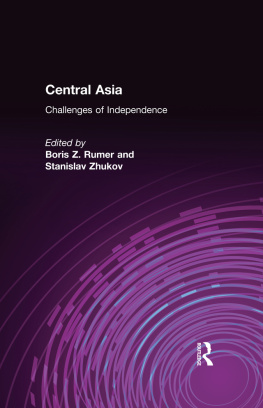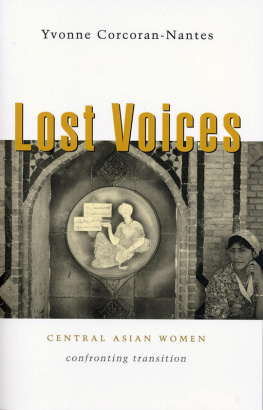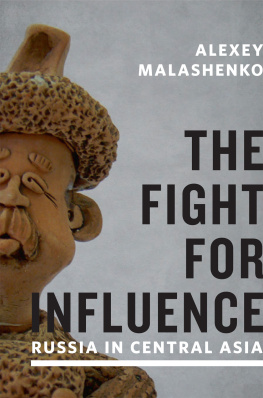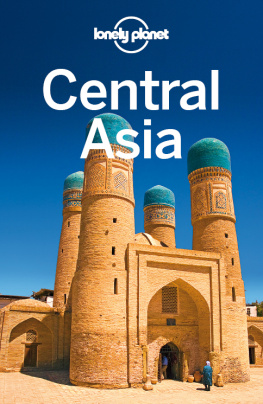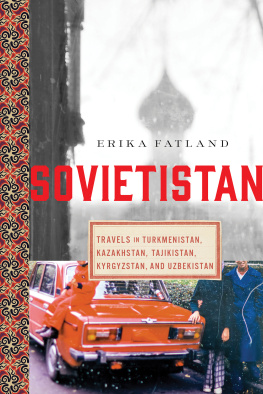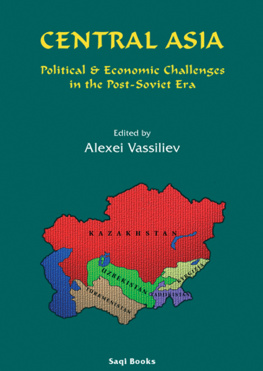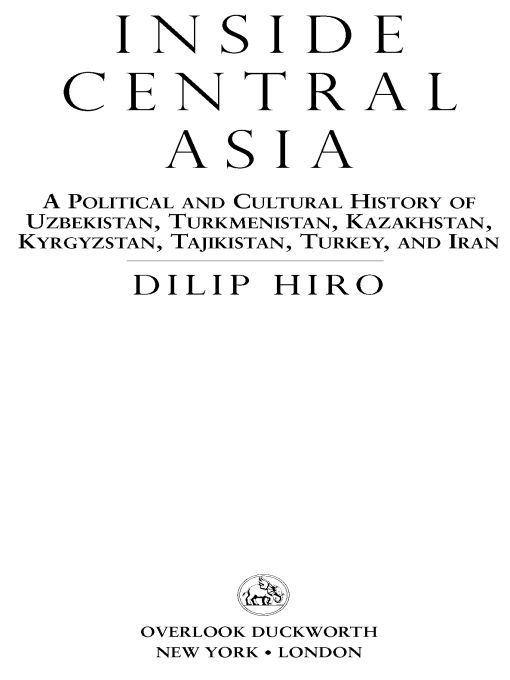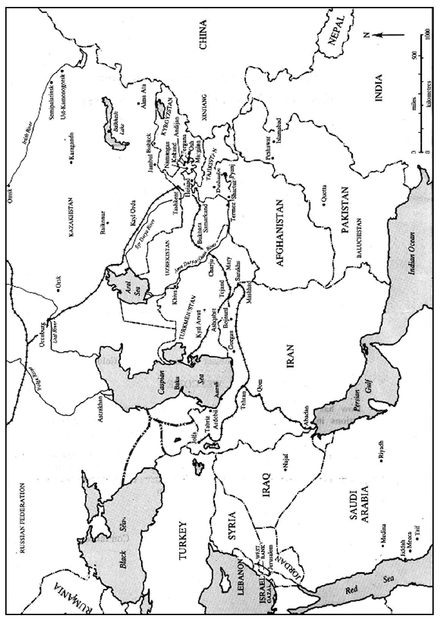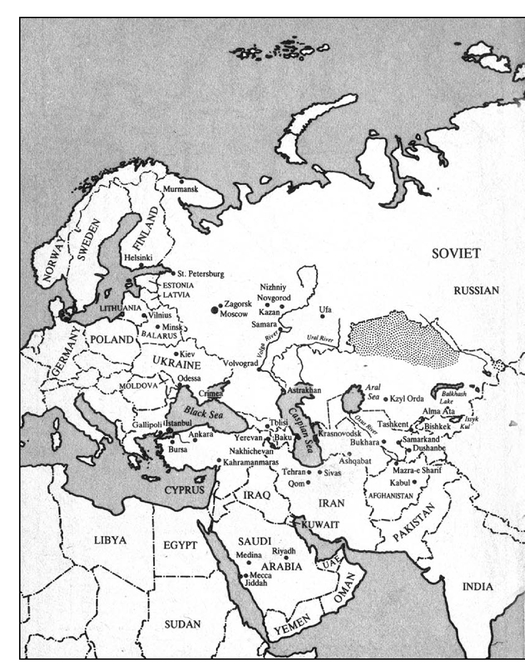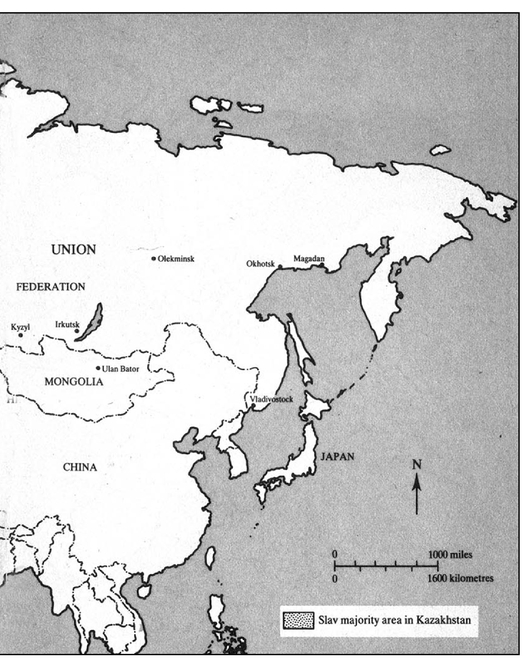Table of Contents
Also by Dilip Hiro
NON-FICTION
Blood of the Earth: The Battle for the Worlds Vanishing Oil Resources (2007)
The Timeline History of India (2006)
The Iranian Labyrinth: Journeys through Theocratic Iran and Its Furies (2005)
Secrets and Lies: Operation Iraqi Freedom and After (2004)
The Essential Middle East: A Comprehensive Guide (2003)
Iraq: In the Eye of the Storm (2003)
War Without End: The Rise of Islamist Terrorism and Global Response (2002)
The Rough Guide History of India (2002)
Neighbors, Not Friends: Iraq and Iran after the Gulf Wars (2001)
Sharing the Promised Land: A Tale of Israelis and Palestinians (1998)
Dictionary of the Middle East (1996)
The Middle East (1996)
Between Marx and Muhammad: The Changing Face of Central Asia (1995)
Lebanon, Fire and Embers: A History of the Lebanese Civil War (1993)
Desert Shield to Desert Storm: The Second Gulf War (1992)
Black British, White British: A History of Race Relations in Britain (1991)
The Longest War: The Iran-Iraq Military Conflict (1991)
Holy Wars: The Rise of Islamic Fundamentalism (1989)
Iran: The Revolution Within (1988)
Iran under the Ayatollahs (1985)
Inside the Middle East (1982)
Inside India Today (1977)
The Untouchables of India (1975)
Black British, White British (1973)
The Indian Family in Britain (1969)
FICTION
Three Plays (1985)
Interior, Exchange, Exterior (Poems, 1980)
Apply, Apply, No Reply & A Clean Break (Two Plays, 1978)
To Anchor a Cloud (Play, 1972)
A Triangular View (Novel, 1969)
PREFACE
DURING THE SOVIET ERA AND ITS IMMEDIATE AFTERMATH, THE CENTRAL Asian region was officially known as Middle Asia and Kazakhstan. In this book, however, the term Central Asia includes Kazakhstan. The names of the republics have undergone changes since the Bolshevik revolution of 1917, the latest version during the Soviet period being Uzbek Soviet Socialist Republic, Kazakh Soviet Socialist Republic, and so on. But once again, to simplify matters, I have used Kazakhstan, Turkmenistan, Uzbekistan, Tajikistan, and Kyrgyzstan (even though its 1993 constitution names it Kyrgyz Republic).
In the course of providing the political, economic, and military history of the five Central Asian republics, I have at the appropriate points sketched a cultural profile of the peoples living in these countries. I have described their evolution from the era of nomadic cattle-rearing to the modern era of launching spacecraft, thus highlighting what has changed in their day-today existence and what has remained largely unchanged at the core.
Every writer knows that to make sense of contemporary events one has to delve into the past. This is all the more so in the case of the Central Asian republics. They were delineated chiefly during the 1920s along ethnic lines, but containing some enclaves of those speaking a minority language, as a result of the policies devised mainly by Joseph V. Stalin (1878-1953). That is why this books Introduction covers the period up to his death.
The breakup of the Soviet Union in 1991 signaled a new phase in the history of each of the Central Asian republics. Given the strategic location of Central Asia, its predominantly Muslim population, and its hydrocarbon and other valuable resources, the emergence of five independent states in 1991 opened up a fresh chapter in international relationswith the United States, China, Turkey, and Iran trying to fill the vacuum left by the collapse of Russias nearly 150-year-old dominance. By the end of the first decade of the twenty-first centuryfollowing several ups and downs in the fortunes of the competing foreign powersRussia had re-emerged as the Big Brother of Central Asians. As such, Russias role is part of the main narrative of each of the five -istans.
Among the regions other neighbors, I have chosen only two to discuss at length: Turkey and Iran. Historically, the Eurasian landmass was ruled first by the Persian tribes and then by the Turkic tribes. The fact that istan (a Persian marker for place or land) appears as a suffix in the names of all Central Asian republics illustrates the importance of the Persian language and influence in the Eurasian landmass. Reflecting the distant past, in the immediate aftermath of the Soviet collapse, a debate raged whether the freshly independent Muslim-majority Central Asian states would follow the model of secular, pro-Western Turkey or the Islamic Republic of Iran.
I begin the main text with a history of Turkey. While concentrating on the dominant religious and secular aspects of its recent history, I briefly describe the countrys religious and ethnic minorities as well as its outstanding architectural and literary heritage.
Due to the cultural and linguistic affinity between Turkey and Uzbekistan, my next chapter discusses Uzbekistan, focusing on the tension between its staunchly secular regime and Islamist forces. It is the most populous, complex, and strategic state in the region, with common borders with all the remaining Central Asian republics. Chapter 3 covers Turkmenistan to the southwest of Uzbekistan. While in recent times Turkmenistan has become intimately associated with its first president, Saparmurat Niyazov, a wildly eccentric dictator, its hydrocarbon reserves make it of key interest in the energy-hungry world of today.
Such is also the case with Kazakhstan, a colossal state, the subject of Chapter 4. It began its independent existence with almost as many Slav citizens, chiefly ethnic Russians, as Kazakha dodgy prospect for nation-building. Its leader, Nursultan Nazarbayev, helped by the slow exodus of Slavs and a high birthrate among Kazakhs, has managed the task adroitly by elevating the twelfth-century poet, Khwaja Ahmad Yasawi, to the status of the Father of the Nation. The construction of the new capital of Astana and a growing prosperity stemming from rising oil revenue have given Kazakh citizens confidence in their future that other Central Asians envy.
The early expectations that the tiny state of Kyrgyzstan would evolve into a properly democratic entity failed to materialize. On the other hand, Kyrgyzes could claim that they overthrew President Askar Akayev peacefully in 2005. Yet that event has failed to secure Western-style democracy in the republic. Paradoxically, political ferment in the country has persisted, along with the custom of bride-stealing, a euphemism for abducting nubile women, dating back to the practice among rival tribes during the nomadic era.
Alone among the Central Asian republics, Tajikistan, the subject of Chapter 6, is culturally and historically close to Iran. Soon after its independence, it got mired in a civil war that lasted five years and devastated the country. The main factor that led to its end was the rise of the Taliban in the neighboring Afghanistan in 1996, and the danger it posed to Tajikistan and other Central Asian states. Since then the Islamist forces in Tajikistan have been in retreat while the secular regime of President Imamali Rahmanov has resorted to emphasizing the pre-Islamic origins of Tajiks dating back to Zoroaster, a prophet in antiquity.


